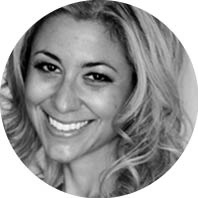Supported By


Dr. Nattis is a cornea, cataract, and refractive surgeon at Lindenhurst Eye Physicians and Surgeons in Babylon, New York.
Please share with us your background.
I grew up in Long Island, New York, and from an early age was fascinated with small, intricate details. As a child, this interest mainly translated to bedazzling fabrics, but, when I entered school, I found a natural appreciation for and understanding of the complexities of the sciences, particularly biology. In college, I decided to pursue a career in medicine, as it incorporated my love for biology and physiology and my desire to treat and connect with patients. Additionally, growing up watching my father, an ophthalmologist, examine and successfully medically and surgically improve patients’ vision and quality of life left a lasting imprint in my mind for the career direction I would choose.
What drew you to ophthalmology and, specifically, to your field of interest?
Upon entering medical school, I was innately drawn to ophthalmology, not only by my experiences watching my father but also because I found the eye so fascinating. No other organ seemed to match the anatomic, physiologic, or pathologic intricacies of the eye. Having the opportunity to do multiple ophthalmology rotations as a medical student further cemented my passion for the field, especially anterior segment surgery.
In no other specialty can a surgeon improve a patient’s quality of life through improvement of vision in a single sitting (and that extends from cataract surgery, to LASIK, to laser capsulotomy!). In addition, the privilege of performing corneal transplantation in patients across all ages and demographics is amazing. The ability to restore sight to a patient with a scarred, irregular cornea; see the results at the slit lamp; and hear how treatment has enhanced the patient’s quality of life is beyond gratifying.
Please describe your current position.
I am currently a cornea, cataract, and refractive surgeon at Lindenhurst Eye Physicians and Surgeons in Babylon, New York. This is a multispecialty practice with a focus on refractive, cataract, cornea, and anterior segment surgery as well as vitreoretinal disease and pediatric ophthalmology. Our practice is dedicated to obtaining and offering the newest technologies to our patients, including femtosecond laser cataract surgery, new IOL designs, intraoperative aberrometry, topography-guided laser refractive surgery, and corneal crosslinking (CXL) for keratoconus, to name a few.
In addition, I am able to offer corneal transplant surgery to patients in the practice, which was a needed niche to fill on the South Shore of Suffolk County on Long Island. Since I started practicing in July, we have successfully performed the first Descemet stripping automated endothelial keratoplasty at Good Samaritan Hospital in West Islip as well as several penetrating keratoplasties.
Who are your mentors?
My most important mentor is my father, Richard Nattis, MD. He has been the most encouraging, supportive, and amazing example of an ophthalmologist I can imagine. At every step along the course of my training, he has been a resource for clinical advice as well as ways to optimize my learning of new technologies and techniques.
In addition, my cornea fellowship mentors, Drs. Eric Donnenfeld and Henry Perry, provided me with the most in-depth, intense cornea, cataract, and refractive experience in 1 year’s time. The amount of information I learned and pathology I observed—both clinically and surgically—was remarkable, and I am very grateful for the opportunity to be trained by and to work alongside these experts.
What has been the most memorable experience of your career thus far?
The most memorable experience thus far was my first day at work in practice with my father. All the training, studying, and (sometimes) grueling hours had led up to that point. The example my father set is a major reason why I chose to pursue a career in ophthalmology, and being able to work with him side by side is wonderful.
What are some new technological advances that you have found particularly exciting? Which advances in the pipeline are you most enthusiastic or curious about?
One technological advance I am very interested in and passionate about is topography-guided ablations (ie, LASIK and PRK). This technique focuses on not only treating refractive error but also treating corneal irregularities during surface ablation and LASIK procedures. Even more exciting is the potential this technique has for providing significant visual improvement in patients with keratoconus and post-LASIK ectasia who have undergone CXL.
Last year at the ASCRS annual meeting, we presented a study on visual outcomes for keratoconus patients after CXL and topography-guided PRK, the results of which were very promising. I hope to continue to expand on this research in order to provide further visual improvement to these patients. I am also interested in the different CXL techniques (eg, accelerated and customized) as well as new advances in refractive cataract surgery, especially astigmatism management.
What is the focus of some of your research?
My research interests are broad and range from refractive surgery to dry eye treatments. Recently, I became involved in a project investigating treatment guidelines for meibomian gland dysfunction and Demodex blepharitis. Dry eye and blepharitis are intertwined entities that lead to both frustrated patients and physicians. Often Demodex blepharitis isn’t thought of as a diagnosis, but it is actually quite prominent. Here, treatments such as mechanical cleansing techniques as well as tea tree oil may be helpful.
In addition, I plan to continue my research on refining visual outcomes in patients with keratoconus and post-LASIK ectasia after CXL. Now that CXL is approved by the FDA, I feel we can really reshape these ectatic corneas and provide substantial improvements in vision and therefore quality of life.
What is a typical day in your life? What keeps you busy, fulfilled, and passionate?
Each day is different, but every day I go to work my focus is the same: to provide the most comprehensive, compassionate, and technologically innovative care to my patients. I try to educate my patients about their conditions, whether it is explaining posterior vitreous detachment or corneal edema in need of transplantation. Taking the time to ensure that patients understand their conditions and treatment plan enforces a strong patient-physician relationship and helps with compliance.
My practice spans from corneal disease, to refractive and cataract surgery, to general ophthalmology. Seeing a wide variety of pathology keeps me busy and on my toes—and fuels my desire to do better each day. When I’m not at work, I spend as much time as possible with my family and friends (including my dachshund, Lily). They help keep me sane and are truly my source of encouragement and happiness. In addition, I make time for working out and enjoy traveling (especially to beach destinations) when time allows.
What advice can you offer to individuals who are just now choosing their career paths after finishing residency or fellowship?
The best advice I can give to anyone transitioning from training to a career in the “real world” is to treat your patients as you would your family. Imagine how it would feel to be on the other side of the slit lamp, fearing that you may lose your vision. Comfort and speak to your patients—and educate them—in the same way you would someone close to you; this will keep you grounded, especially in tough or challenging situations. Once you have a strong foundation and have established good patient-physician relationships, all of the extraneous (but also important!) activities, such as research, publishing, and social media, can be accomplished more easily.
I also recommend setting realistic goals for the first year of practice. The realization that you are the only one responsible for your actions/surgeries/conversations with your patients comes very quickly once you have finished training and entered practice—whether you stay in academics or go into a private setting.
Tell us about an innovative procedure you are performing or a new imaging/diagnostic tool that has improved your practice.
Over the past few years, innovation in ophthalmology has exploded. It is hard to pick one treatment or technology that seems more interesting or effective than the others, but one procedure I am performing in practice that has had a huge impact is CXL. As screening for keratoconus and ectasia becomes more prevalent, the need for CXL is increasingly apparent. Having become familiar with the procedure during my fellowship, I am proud to be able to offer our patients CXL to help halt progression of their disease, preserve their vision, and improve their quality of life.



